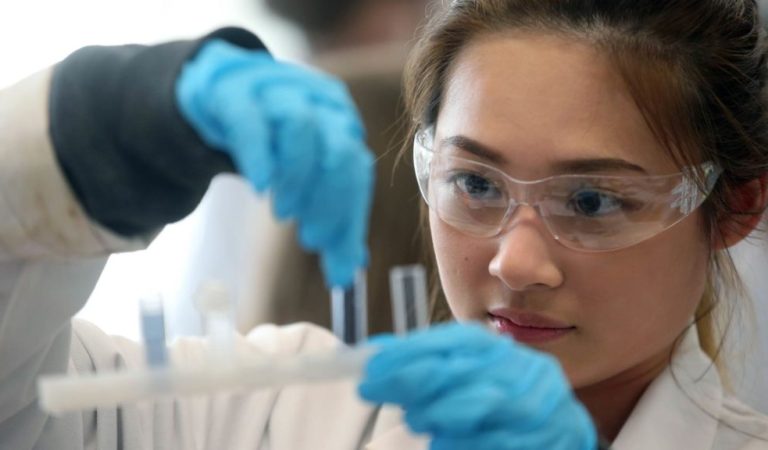- IB Chemistry - Chemistry students can gain all access to downloadable chemistry notes through Tutopiya to help them prepare for their exam
Chemistry is a part of Group 4 (Experimental Science) subject in the IBDP curriculum. It is the study related to investigation of properties and relationship of matter and its changes and is comprised of 3 different papers.
Paper-1 has multiple choice questions (40 for HL in 1hour and 30 for SL in 45 minutes) and has 20% weightage. The structure based questions are assessed in Paper-2 whereas Paper-3 is on database questions and study of one of the options from the prescribed optional topic of IB.
A apart from these 3 written papers which are externally marked for 80%, each student also need to conduct an Individual Investigation (IA) for remaining 20% .
INTERNAL ASSESMENT
Topic 1
- Heat hydrochloric acid and ethyl acetate in water bath to specific temperature.
- Mix them and titrate some quantity of the mixture with sodium hydroxide.
- Repeat the titration after every 10min for the same mixture in the water bath.
- Do remember to quench the reaction mixture on ice cold water as soon as it is out from the water bath.
POINTS FOR CALCULATION AND ANALYSIS
- This experiment can be performed at different temperatures to study the rate of reaction.
- Rate of reaction is the volume used for tutration at specific time.
- It can further be used to calculate Activation energy using Arrhenius equation and plotting graph.
Topic 2
PRACTICAL APPLICATION
Soap/Detergents are made from the reaction between the oil and sodium or potassium hydroxide. The amount of alkali which is required depends on the saturation hydroxide. The excess alkali present is considered as free alkali content of the soap.
- The excess Alkali in soap causes itching and skin irritation.
- Detergents which high pH when disposed harm the environment.
- They are corrosive and damage the material.
PROCEDURAL OUTLINE
Soaps can be prepared from oils with different degree of saturation. The prepared soap is them tested for free alkali content.
Dissolve certain amount of soap sample in hot water and make is acidic by adding nitric or hydrocholric acid, Hear cool and remove solid fatty acid with the help of chloroform. Titrate the free alkali with Sodium hydroxide.
ANALYSIS
- Correlate the free alkali content with the degree of saturation of oil.
- The fatty acid present in the soap can also be determined and the free alkali content and amount of fatty acid can be coeeelated to determine the quality of soap.
Topic 3
PRACTICAL APPLICATION
Luminol is an important compound in chemiluminescence. This compound when reacts with an oxidizing agent, replaces the nitrogen and hydrogen with oxygen. The energy produced by this takes the electron to high excited state and when it drops back the energy is released in the form of light.
The above chemical reaction can be used:
- In Forensic lab for detecting the blood sample.
- The light produced can be used as emergency light at the time of disaster.
PROCEDURAL OUTLINE
Certain amount of luminol is made to react with hydrogen peroxide ( commonly found in bleach). This reaction can be done with or without the catalyst. The most common catalyst in this reaction is iron.
The light produced can be studied with different factors keeping the concept of chemical kinetics in mind.
ANALYSIS
The experimental data can be recorded either with the luminous intensity probe or recording the time in which light disappears.
The rate of reaction can be studies and if experiment is performed at different temperature activation energy can be calculated.
Are you interested in giving online tutoring a try? In a matter of seconds, create an account with Tutopiya.com for a 60 minute free trial to see whether our Online Whiteboard classroom is the right decision for your child.
Nuha Ghouse
Nuha Gouse is the Co-founder of Tutopiya and is equipped with a first class honours Math degree from Imperial College, London. Her mission is to provide personalized individual lessons online where students from around the world can learn at their own pace and convenience.






